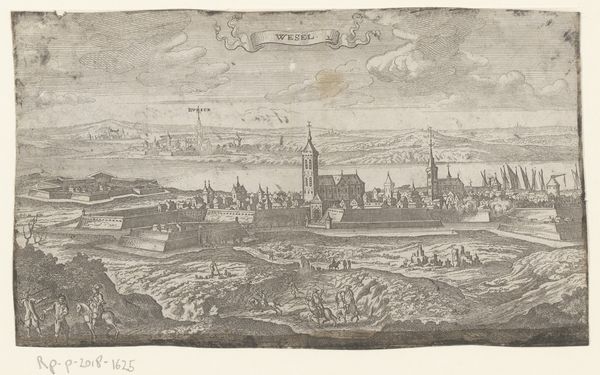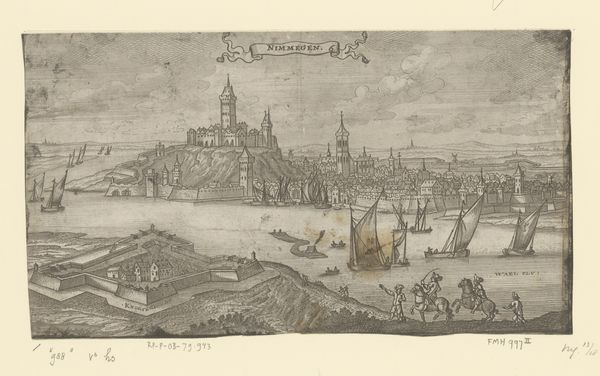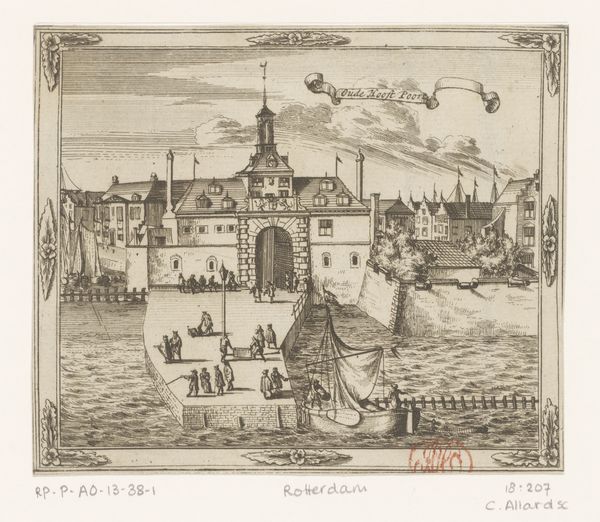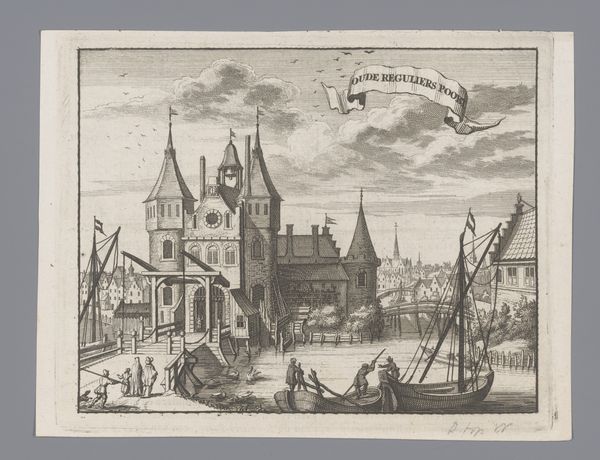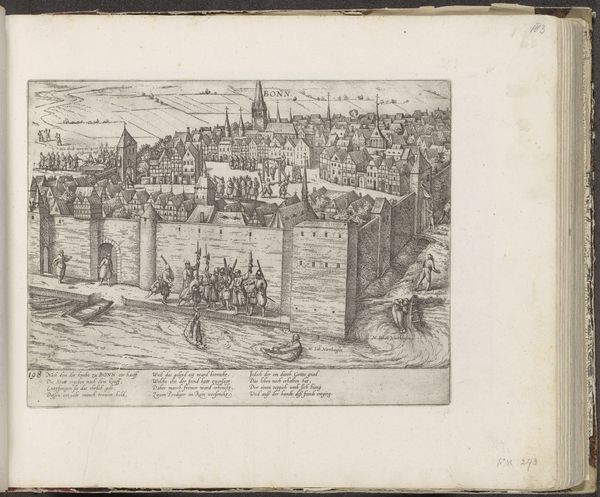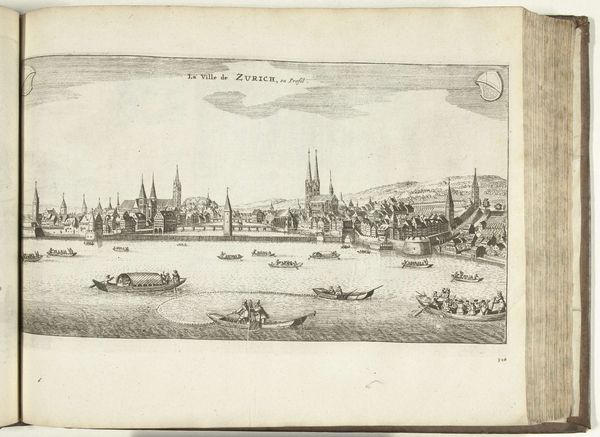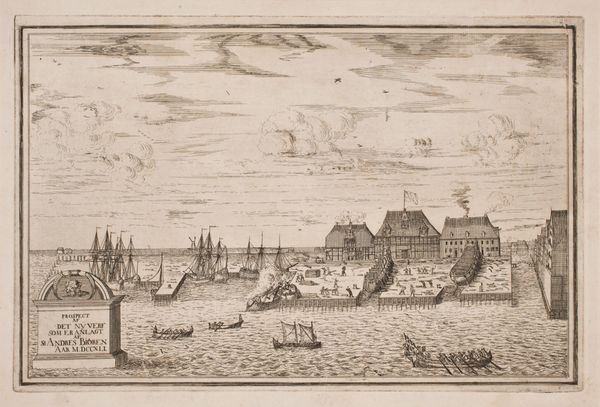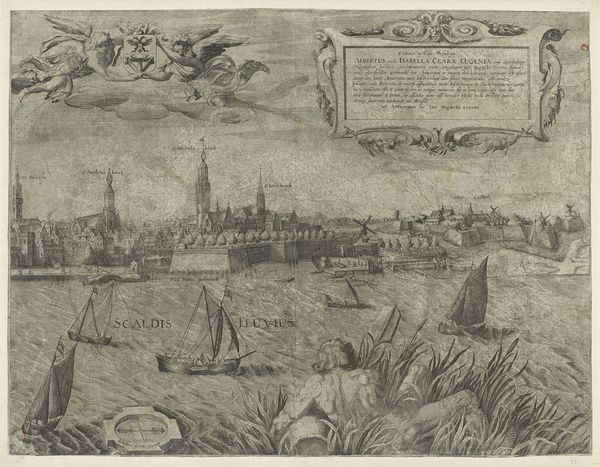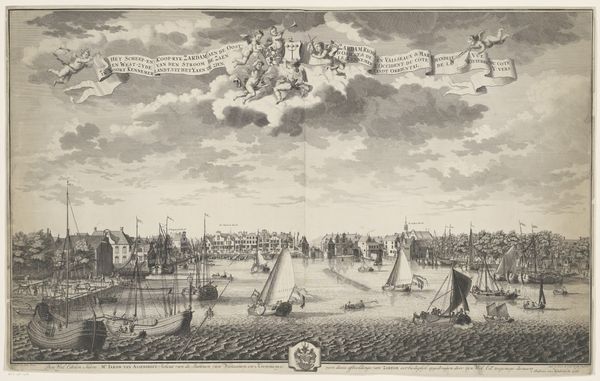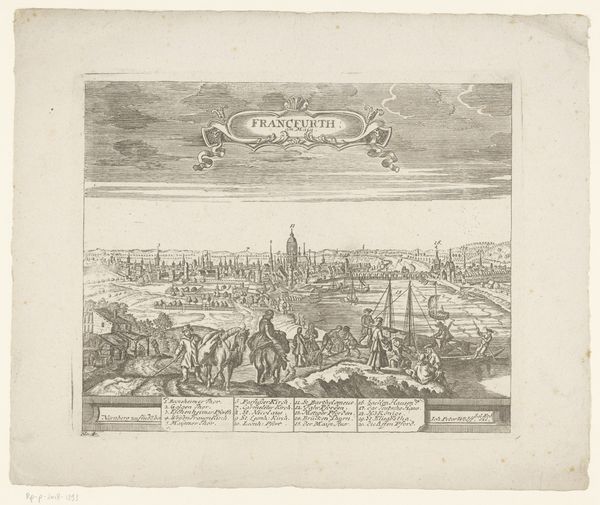
print, etching, engraving
#
dutch-golden-age
# print
#
etching
#
landscape
#
cityscape
#
engraving
Dimensions: height 123 mm, width 146 mm
Copyright: Rijks Museum: Open Domain
Editor: We are looking at “Gezicht op de Ooster Nieuwe Hoofdpoort,” an etching and engraving print made around 1696-1730. The details are incredible, despite the small scale and monochrome palette. What formal qualities strike you? Curator: Immediately the linear structure commands attention. Harrewijn uses precise lines to define every element. Note how the architecture is rendered: crisp edges define each brick and tile. Do you observe a spatial hierarchy at work? Editor: Yes! The gate occupies the central ground, the water recedes into depth on either side, and the larger building anchors the background, so our eye is drawn around in a sort of circle, from foreground to middle to background. What does that signify, the order in the structure? Curator: Precisely. It directs the eye strategically, emphasizing depth and perspective through calculated placement. And what of the interplay between the solid structures and the fluidity of the water? Consider also the stark contrast between light and shadow, modulating the planar surfaces of the gate. This serves not simply to mimic reality but to intensify the visual drama. Editor: The way you focus on line and placement makes the piece feel so carefully planned. Looking at the distribution of darks and lights has reshaped my experience completely! Thank you. Curator: And understanding the framework through which art is built allows deeper connection, beyond the surface narrative.
Comments
No comments
Be the first to comment and join the conversation on the ultimate creative platform.
